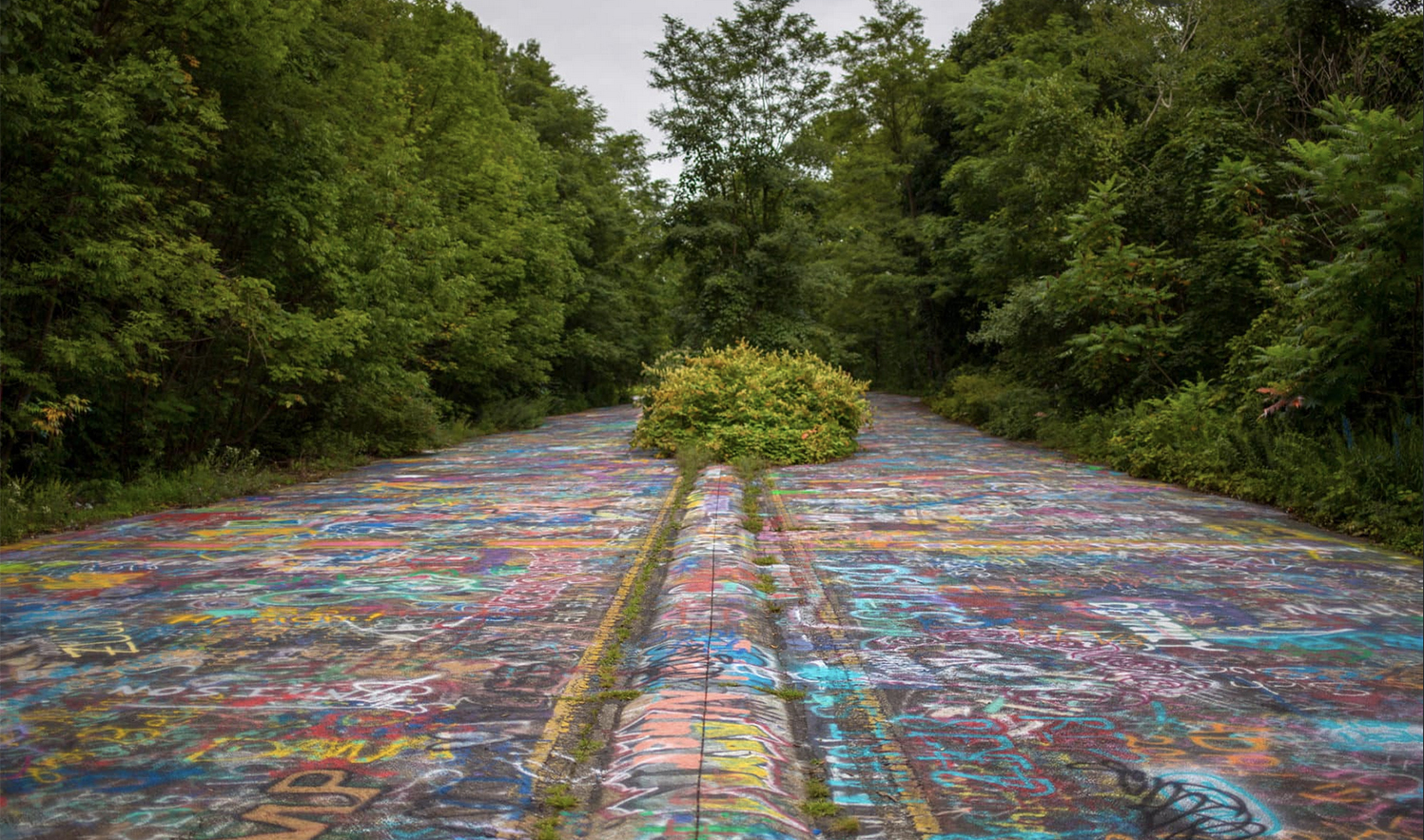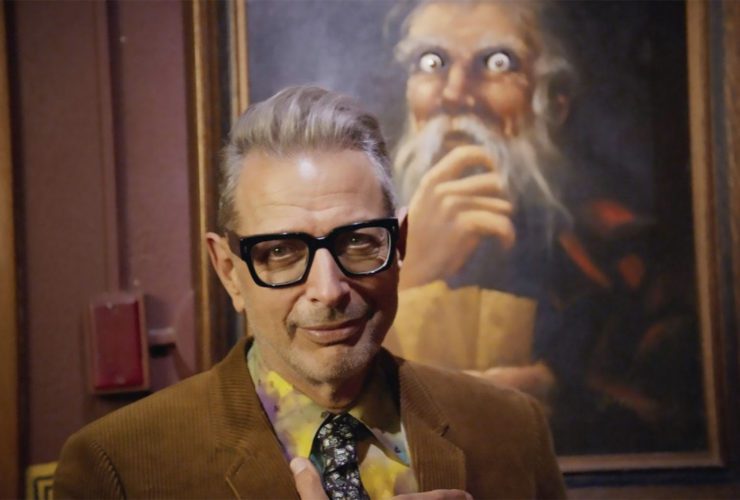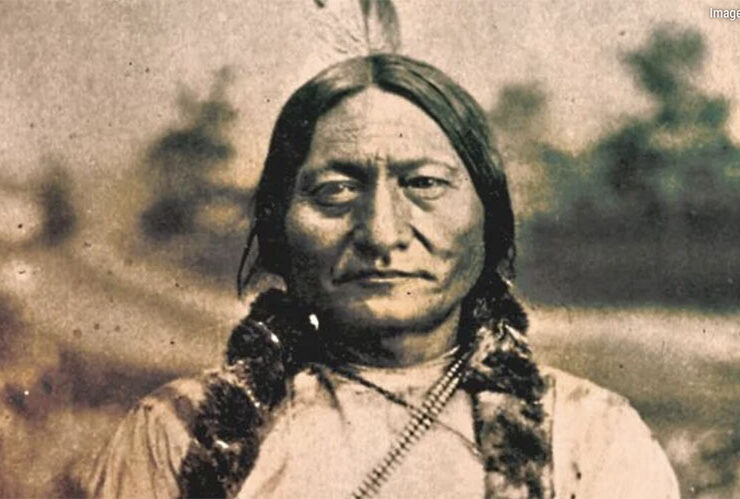The “Town that Was.” In 1962 a fire that had been deliberately started in the town’s trash dump ignited a coal seam just below the surface and started an underground inferno that still burns today.
The story of Centralia focuses on the people’s struggle against the state and federal government who neglected to put out the mine fire in a timely matter. As a result, the fire spread underground affecting a majority of the borough.
Centralia, Pennsylvania was a busy small town filled with shops, residents and a brisk mining business. Coal from local mines fueled its homes and its economy, and its 1,200 residents worked, played and lived as tight-knit neighbors.
Today couldn’t be more different. Centralia’s streets are abandoned. Most of its buildings are gone, and smoke wafts down graffiti-strewn highways where a prosperous town once stood. The formerly busy burg has turned into a ghost town.

The cause was something that’s still happening beneath Centralia’s empty streets resulting in the devastation of a community and the eviction and impoverishment of many of its residents.
The blaze began in the town’s rubbish dumb, circled a cemetery, then quickly spread below the surface, making its way into the coal seams deep below the old mining town. Experts estimate there is enough coal underground for the fire to keep burning for another 250 years.
Ironically, one of the few buildings left in Centralia is the fire station. But it is only manned by volunteers in emergencies. The adjoining police station was abandoned long ago – the nearest police is 30 miles away.
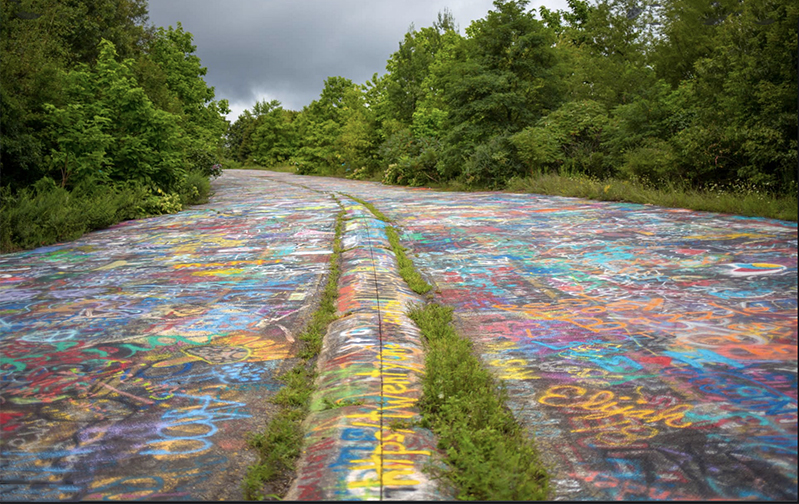
Anyone assuming the town is crime free is in for a shock. Graffiti artists and biker gangs have turned the Pennsylvania town into a noisy nightmare for the remaining residents.
Harold Mervine, who is the president of the town said: “This should be a nice quiet place but there are so many idiots roaming around in the middle of the night, it’s ridiculous.”
“We have traffic coming down the street at all hours. At 4:30 the other morning someone was outside shooting a gun. “There’s a big worry about crime and people dropping garbage everywhere.”
Crime is always top of the agenda at monthly council meetings for Harold and his three fellow councilors, Bonnie Hynoski, her husband Steve and his brother Tommy.
VALENTINE’S DAY 1981
Outsiders took no notice of Centralia and the adjoining hamlet of Byrnesville until Valentine’s Day 1981 when 12-year-old Todd Domboski fell into a steaming hot sinkhole that suddenly opened up in his grandmothers back garden.
As he screamed for help, 80ft of earth fell away and great gusts of smoke billowed around him. Todd clung to a tree root until his 14-year-old cousin Eric Wolfgang managed to pull him to safety. He was covered in hot sludge and was lucky to survive. Doctors said he was moments from death due to the lethal levels of carbon monoxide spewing from the fiery hell hole.
As journalists started asking questions, the government decided it was cheaper to pay residents $32 million to relocate than spend $513 million extinguishing the underground blaze.
Abandoned homes were quickly boarded up, before they too were swallowed by flames or subsidence. People started moving away because of breathing problems as noxious gases bubbled to the surface.
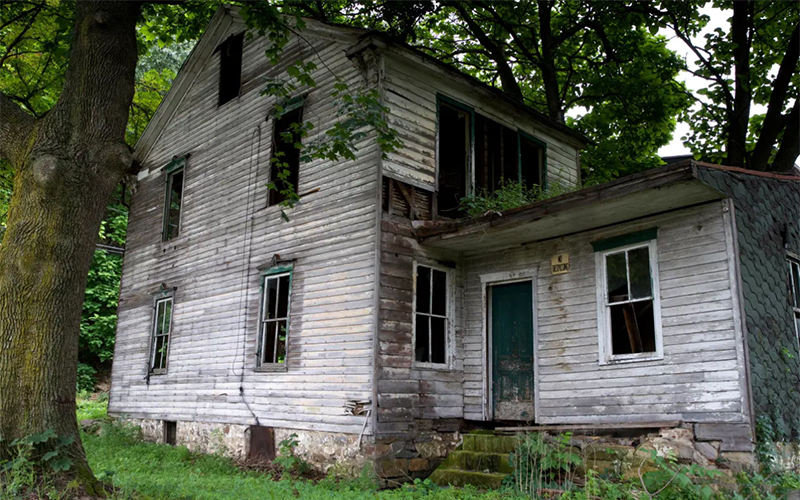
Nature took over and today most of Centralia has reverted to thick woods. A few buckled, weed-strewn roads remain, along with four houses, two cemeteries and a church.
In 2002 Centralia’s postal zip code was revoked. And now the state is taking action to remove the remaining homeowners.
After British-based travel writer Bill Bryson described Centralia as “The strangest, saddest place I believe I have ever seen,” documentary makers, graffiti artists and tourists started showing up – driving the remaining locals crazy.
A FEW RESIDENTS REMAIN
Harold, a 67-year-old part-time bus driver, said: “Just last week a man from England and his son were here. “I don’t mind chatting but the other folks get fed-up answering questions about the fire. They say they’ve been raked over the coals too many times.”
Harold lives alone in his 100-year-old, three-bedroom house, originally bought by his grandfather. He has a narrow, fenced-in garden at the back but cuts several acres of grass around the remaining homes every week to keep what is now the main bit of town neat.
His late father Lamar, once the town’s mayor, accepted a $272,000 compensation deal allowing them to live on the land for life. He added:
“There are just six residents left now and we do what we can to help each other. The Hynoski brothers run the firehouse and I do the lawns. We lost a resident, Kathi Womer, and that’s a sad story too. Her dad Carl was the last mayor of Centralia and he fought long and hard to stay in his house. But he got cancer and he just got too tired to fight.”
A CENTURY’S OLD MINING TOWN
Coal seam fires are nothing new, but Centralia’s is the United States’ worst and one of history’s most devastating. Before the 1962 fire, Centralia had been a mining center for over a century. Home to a rich deposit of anthracite coal, the town was incorporated after mining began in the 1850s.
THE MOLLY MAGUIRES

Between 1861 and 1875, a series of violent assaults, arsons and murders was blamed on a secret society of Irish immigrants known as the Molly Maguires.
The group had originally emerged in north-central Ireland in the 1840s as an offshoot of a long line of rural secret societies including the Whiteboys and Ribbonmen, who responded to miserable working conditions and evictions by tenant landlords with bloody vengeance.
The Molly Maguires are suspected to have committed a rash of violence within Centralia. As Pennsylvania historian Deryl B. Johnson notes, the Molly Maguires were implicated in everything from the murder of the town’s founder, Alexander Rae, to the death of the area’s first priest.
“Some believe that the Mollies were guilty, while others claim that the Mollies were framed by owners of the mines who feared that the members of the Mollies and [other organizations] would organize the mine workers into unions.”
Deryl B. Johnson
Eventually, after a brutal attempt to subdue the Mollies and the execution of some of the groups’ suspected leaders in 1877, the crime wave ended.
A GHOST TOWN
Today, Centralia is a real-life ghost town; one can see the cracked asphalt where the streets used to be, and yet there are no homes or businesses. It is an eerie and forbidding landscape, and a sad true-life story.
The documentary “The Town That Was” does an effective job of telling the tragic story of Centralia. The key informant here is John Lokitis, the youngest of a handful of holdouts who absolutely refused to evacuate.
Home movies and some old news footage capture what Centralia used to look like; the juxtaposition between old images of a thriving town of happy families and modern footage of the empty, smoking landscape of today is heartbreaking.
